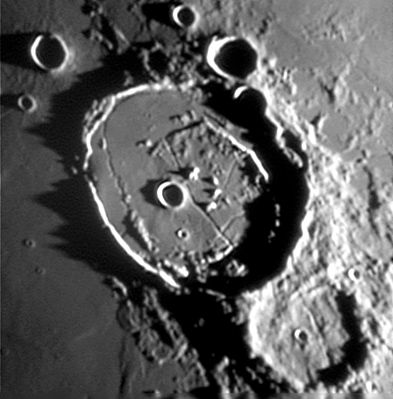Difference between revisions of "January 9, 2004"
| Line 1: | Line 1: | ||
__NOTOC__ | __NOTOC__ | ||
=Posidonius: Rilles and Uplift= | =Posidonius: Rilles and Uplift= | ||
| − | + | <table width="85%" border="0" align="center" cellpadding="4" cellspacing="2"> | |
| − | + | <tr> | |
| − | + | </tr> | |
| − | + | </table> | |
| − | + | <table width="640" border="0" align="center" cellpadding="6" cellspacing="2"> | |
| − | + | <tr> | |
| − | + | <td> | |
| − | + | <div align="center"> | |
| − | + | [[File:LPOD-2004-01-09.jpeg|LPOD-2004-01-09.jpeg]] | |
| − | + | <br> | |
| − | + | <span class="main_sm"><b>Image Credit:</b> | |
| − | + | [mailto:jphillip@bcpl.net Jim Phillips]</p> | |
| − | + | </span> | |
| − | + | </div> | |
| − | + | </td> | |
| − | + | </tr> | |
| − | + | </table> | |
| − | + | <p><table class="story" border="0" bgcolor="#FFFFFF" width="90%" cellpadding="10" align="center"> | |
| − | + | <tr> | |
| − | + | <td valign="top"> | |
| − | + | <p class="story" align="center"> | |
| − | + | <b>Posidonius: Rilles and Uplift </b></p> | |
| − | |||
| − | |||
| − | |||
| − | |||
| − | |||
<p class="story">Posidonius is a beacon of interest along the otherwise bland north-eastern shore of Serenitatis. The large (95 km wide, | <p class="story">Posidonius is a beacon of interest along the otherwise bland north-eastern shore of Serenitatis. The large (95 km wide, | ||
2.3 km max depth crater may have originally looked like Copernicus with broad terraced walls and a scattering of peaks | 2.3 km max depth crater may have originally looked like Copernicus with broad terraced walls and a scattering of peaks | ||
| Line 38: | Line 33: | ||
- are they uplifted floor or isolated portions of terraces? Take a look! </p> | - are they uplifted floor or isolated portions of terraces? Take a look! </p> | ||
<p><b>Related Links:</b> | <p><b>Related Links:</b> | ||
| − | + | <br> | |
| − | + | [http://www.apolloexplorer.co.uk/photo/html/as15/10075722.htm Posidonius from Apollo 15]</p> | |
| − | + | <p><b>Tomorrow's LPOD:</b> Photo of the Century</p> | |
| − | + | </td> | |
| − | + | </tr> | |
| − | + | </table> | |
| − | + | <p> | |
| − | + | <hr width="640"> | |
| − | + | <p></p> | |
| − | + | <p align="center" class="main_titles"><b>Author & Editor:</b><br> | |
| − | + | [mailto:chuck@observingthesky.org Charles A. Wood]</p> | |
| − | + | <p align="center" class="main_titles"><b>Technical Consultant:</b><br> | |
| − | + | [mailto:anthony@perseus.gr Anthony Ayiomamitis]</p> | |
| − | + | <p align="center" class="main_titles"><b>[mailto:webmaster@entropysponge.com Contact Webmaster]</b></p> | |
| − | + | <p align="center" class="main_titles"><b>A service of:</b><br> | |
| − | + | [http://www.observingthesky.org/ ObservingTheSky.Org]</p> | |
| − | + | <p align="center" class="main_titles"><b>Visit these other PODs:</b> <br> | |
| − | + | [http://antwrp.gsfc.nasa.gov/apod/astropix.html Astronomy] | [http://www.msss.com/ Mars] | [http://epod.usra.edu/ Earth]</p> | |
| − | |||
| − | |||
| − | |||
| − | |||
<p> </p> | <p> </p> | ||
| − | |||
| − | |||
---- | ---- | ||
===COMMENTS?=== | ===COMMENTS?=== | ||
Click on this icon [[image:PostIcon.jpg]] at the upper right to post a comment. | Click on this icon [[image:PostIcon.jpg]] at the upper right to post a comment. | ||
Revision as of 17:08, 4 January 2015
Posidonius: Rilles and Uplift
|
Posidonius: Rilles and Uplift Posidonius is a beacon of interest along the otherwise bland north-eastern shore of Serenitatis. The large (95 km wide, 2.3 km max depth crater may have originally looked like Copernicus with broad terraced walls and a scattering of peaks centered on a deep, flat floor. But thats not how it looks now! As this excellent photo by Jim Phillips shows the inner walls are narrow ridges (at least on the mare side), the floor is shallow, wide and covered with arcuate mountains, hills and rilles. How did the transformation take place? Like [LPOD-2004-01-07.htm Petavius], Posidonius is a floor-fractured crater. Rising magma ponded under Posidonius, uplifting and fracturing its floor. Lava also leaked out and partially filled the crater and created the sinuous rille. The small semi-circle of peaks near the center may be the tops of a lava-large buried central peak complex. The arcuate mountains near the east and west walls are more mysterious - are they uplifted floor or isolated portions of terraces? Take a look! Related Links:
Tomorrow's LPOD: Photo of the Century |
Author & Editor:
Charles A. Wood
Technical Consultant:
Anthony Ayiomamitis
A service of:
ObservingTheSky.Org
Visit these other PODs:
Astronomy | Mars | Earth
COMMENTS?
Click on this icon File:PostIcon.jpg at the upper right to post a comment.




